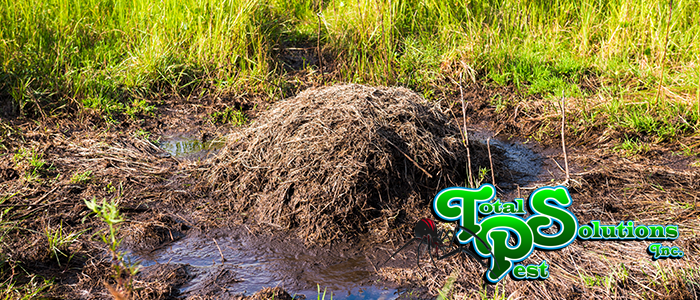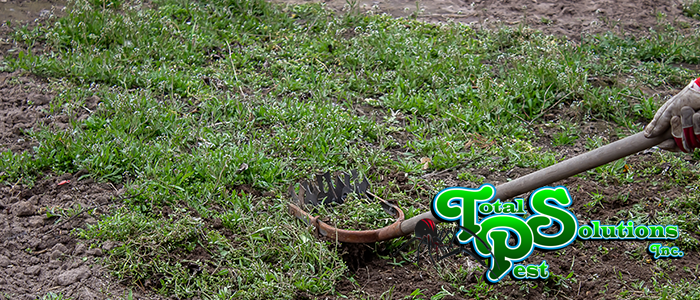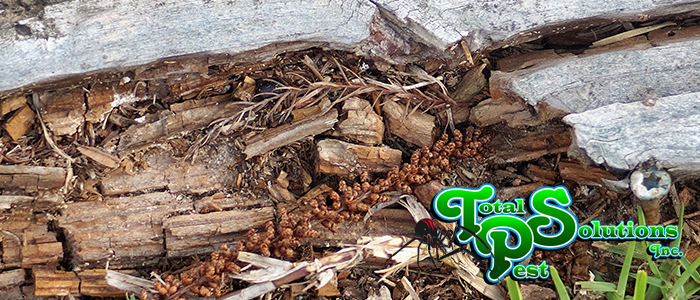
Auburndale’s Fire Ant Mounds: Post-Rain Repair Strategies
Auburndale, Florida, like much of the Sunshine State, experiences frequent rainfall, which can exacerbate the problem of fire ant mounds. These mounds not only mar the appearance of your lawn but also pose a stinging threat to people and pets. After a heavy downpour, fire ant mounds often become more visible and active, requiring prompt attention and repair. This article provides practical strategies for dealing with post-rain fire ant mounds in Auburndale, ensuring a safer and more attractive outdoor environment. Implementing effective control measures and preventative techniques will help you manage these persistent pests and maintain a healthy lawn.
Understanding the Impact of Rain on Fire Ant Mounds
Rain significantly influences the activity and structure of fire ant mounds. Heavy rainfall saturates the soil, causing the ants to move their colonies to higher ground to avoid drowning. This often results in the rapid formation of new mounds or the expansion of existing ones. The increased moisture also makes the soil more pliable, allowing the ants to tunnel more easily and expand their underground network. Understanding how rain affects fire ant behavior is crucial for developing effective post-rain repair strategies.
After a rain event, fire ants are more likely to forage for food and repair their damaged mounds. This increased activity makes it an ideal time to implement control measures, as the ants are actively transporting bait back to their colonies. Monitoring your yard after rainfall will help you identify and address any new or expanded mounds promptly. Recognizing the link between rain and fire ant activity is the first step in managing these pests effectively.
Assessing Fire Ant Mound Damage After Rainfall in Auburndale
Following a rainstorm in Auburndale, carefully assess the extent of fire ant mound damage in your yard. Look for mounds that have been partially collapsed or washed away, as well as new mounds that have appeared. Note the location and size of each mound to help you plan your repair strategy. Pay attention to areas where water tends to accumulate, as these are more likely to attract fire ants seeking higher ground. Proper assessment of mound damage is essential for determining the most effective treatment approach.
Check for signs of increased fire ant activity, such as ants foraging near the mounds or along walkways. Be cautious when approaching the mounds, as fire ants can deliver painful stings. Wear protective clothing, including shoes and socks, and avoid disturbing the mounds unnecessarily. Documenting the condition of the mounds before and after treatment will help you track the effectiveness of your repair efforts. Do not assume that heavy wash will destroy colonies, merely relocate them.
Direct Treatment of Fire Ant Mounds After Rain
One of the most effective methods for dealing with fire ant mounds after rain is direct treatment. This involves applying an insecticide directly to the mound, either in liquid or granular form. Liquid treatments typically involve drenching the mound with a diluted insecticide solution, while granular treatments are scattered over the mound and then watered in. Always follow the manufacturer’s instructions carefully when applying insecticides, and wear protective clothing to avoid contact with the chemicals.
Choose an insecticide that is specifically labeled for fire ant control and is appropriate for use in residential areas. Be sure to select the right tools for the task as well. Some products are designed for single-mound treatments, while others are intended for broadcast application over a larger area. For best results, apply the treatment in the early morning or late evening when fire ants are less active. The University of Florida’s Entomology and Nematology Department offers great information on identifying different ants.
Baiting Strategies for Effective Fire Ant Control
Baiting is another effective strategy for controlling fire ant mounds, especially after rainfall. Fire ant baits consist of a slow-acting insecticide combined with a food source that attracts the ants. The worker ants carry the bait back to the colony, where it is shared with other ants, including the queen. This method can effectively eliminate entire colonies over time. Apply the bait around the mounds, following the manufacturer’s instructions.
Choose a bait that is fresh and attractive to fire ants. Avoid applying bait to wet or saturated soil, as this can reduce its effectiveness. Reapply the bait as needed, especially after rainfall. Baiting is a slow but reliable method for achieving long-term control of fire ant mounds. Be patient and committed to ensure ultimate success while staying fire ant mounds free.
Lawn Care Practices to Prevent Fire Ant Mound Re-emergence
Proper lawn care practices can help prevent the re-emergence of fire ant mounds in your yard. Maintain a healthy lawn by providing adequate fertilization, watering, and mowing. A dense, healthy lawn is less attractive to fire ants than a sparse, stressed lawn. Regularly aerate your soil to improve drainage and reduce the likelihood of water accumulation, which can attract fire ants. Learn more facts and strategies on preventing more mounds from the University of Florida IFAS website.
Control weeds promptly to eliminate potential food sources for fire ants. Avoid overwatering your lawn, as this can create favorable conditions for ant activity. Mulch around trees and shrubs to help retain moisture and suppress weed growth. Implementing these lawn care practices will create a less hospitable environment for fire ants and reduce the likelihood of mound formation.
Conclusion: Maintaining an Ant-Free Yard After the Rain
Managing fire ant mounds in Auburndale after rainfall requires a combination of direct treatment, baiting strategies, and proper lawn care practices. Be sure to also consider natural controls, such as nematodes. By assessing the extent of mound damage, applying appropriate control measures, and implementing preventative techniques, you can effectively manage these pests and maintain a safer, healthier, and more attractive outdoor environment. Remember to prioritize safety when dealing with fire ants and insecticides, and consider seeking professional help when necessary. Contact Total Pest Solutions for expert fire and control services, including post-rain treatments!
Consistent monitoring and proactive management will help you keep your yard fire ant free, even after heavy rainfall. Staying vigilant and implementing these strategies from season to season will help ensure your success.
continue reading
Related Posts
Holiday Pest-Free Homes in Winter Haven: Avoiding Cargo Pests As
Auburndale’s Mole Cricket Damage: Repairing Turf Before Frost As the
Lakeland’s Fall Termite Swarms: Early Detection Tips As the summer






